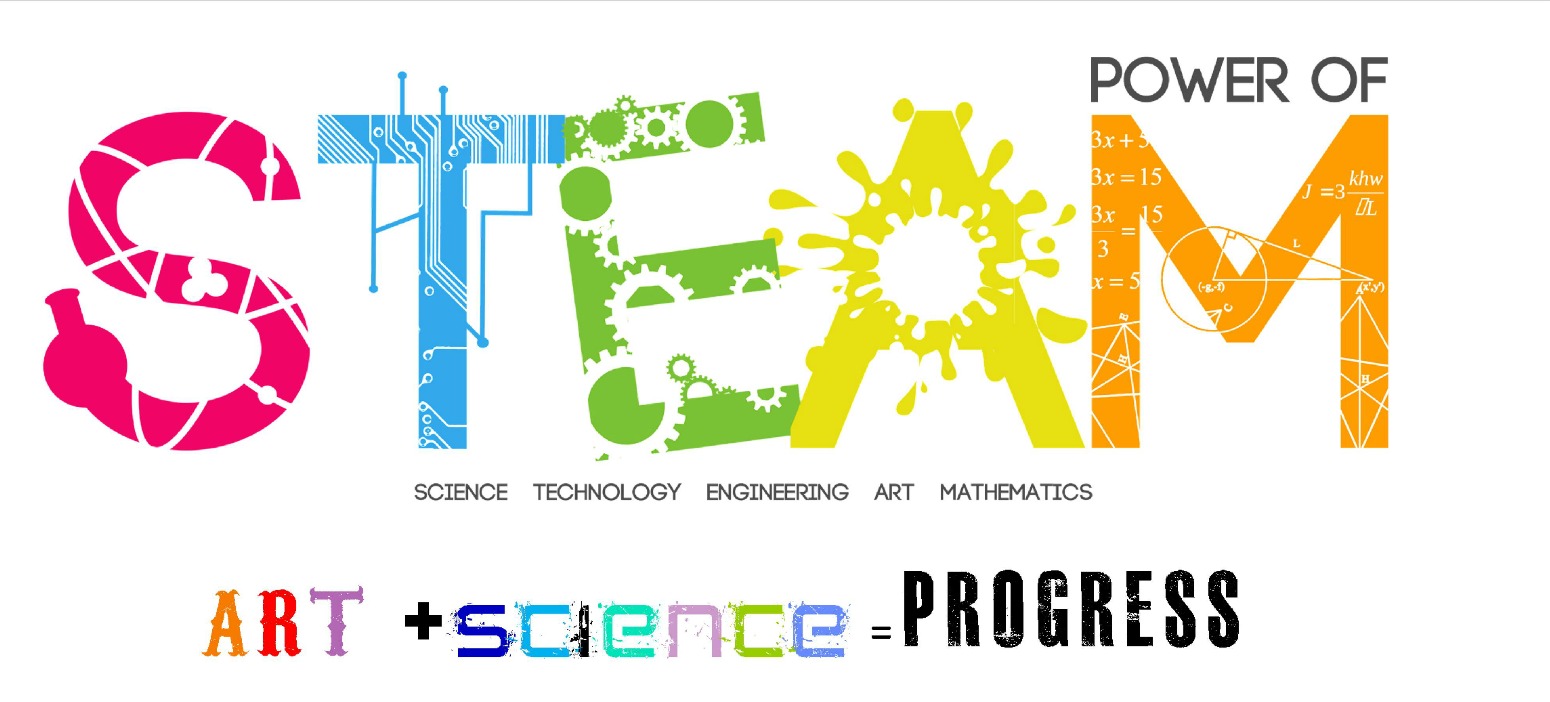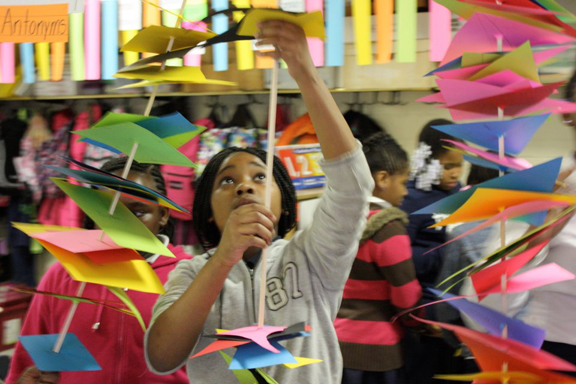STEM to STEAM: The Role of Arts Education in Preparing Students for the Future
“The difference between science and the arts is not that they are different sides of the same coin… or even different parts of the same continuum, but rather, they are manifestations of the same thing. The arts and sciences are avatars of human creativity.”
– Mae Jemison; doctor, dancer and first African American woman in space
It’s no secret that the technological revolution of the past 20 to 30 years has transformed the workforce and impacted the jobs available for those seeking employment. This revolution has primarily increased the need for employees with competencies in the areas of science, technology, engineering, and math (STEM). The U.S. Congress Joint Economic Committee reported that the “need for workers with STEM skills is heightened in today’s global economy. Technological innovation improves the competitive position of U.S. industries, drives export growth, and supports high-quality jobs.”
So how do we ensure that our students gain these skills and become prepared to enter the workforce?

(Graphic from Children’s Museum of Illinois)
Naturally, schools need to focus on maintaining curricula and improving their STEM-related courses, but students’ success in these courses is affected by other factors as well. One key factor is students’ involvement with the arts. Moving from STEM to STEAM (adding the A for Arts) is attracting attention; House Resolution 319 expresses that “adding art and design into federal programs that target Science, Technology, Engineering and Math (STEM) fields, encourages innovation and economic growth in the United States.”
Experience in the arts is a key component of students’ performance in core classes, argues Kevin Eubanks in his emphasis on a “compassionate balance” between arts involvement and required courses such as science and math. Eubanks is a prolific jazz guitarist and former Tonight Show bandleader, and he considers his arts education essential to his success. “You just learn more. You open your mind. In arts programs, music programs, you do it more so as a group, more so than all of the other disciplines do. You learn to work with other people.” This group involvement and collaboration that students receive in arts electives such as bands, orchestras, and choirs is not achieved at the same level in their core classes. Through arts activities, students gain a sense of community and connection with their peers as well as teachers. Eubanks mentions that students entering the workforce need compassion, empathy, inclusion, and humanity toward others and the environment, and experience in the arts helps them build foundations in all these areas.

Kevin Eubanks (photo: WEMU)
The effects of arts education on other competencies are well-documented. “Motor skills in young children, decision making, enhanced academic performance, visual learning, inventiveness, cultural awareness, language development and improved self-esteem” are noted benefits of arts education, according to Toria Watson, Executive Director of the Moonlight Cultural Foundation. She also cites studies that illustrate the difficulty with core subjects, behavioral problems, and higher dropout rates experienced by students who do not have access to art classes. Participating in art classes encourages critical thinking and innovation, valuable skills for entering the workforce, especially in STEM fields. The self-esteem, confidence, and creative voice developed through arts education are critical for employers who reported having difficulty finding recruits with creative abilities.

Students in the Building Mathematics and Science Competencies through an Arts Integration Model program through the Philadelphia Arts in Education Partnership
I would consider my own involvement with the arts to be the most valuable parts of my education thus far. Participating in instrumental and choral ensembles from the elementary school level to the university level has provided me with many opportunities to collaborate with others, build friendships, develop critical thinking skills, expand my cultural awareness, and express myself creatively. I also honed my interest in the visual arts through art courses offered by my elementary, middle, and high schools and university. These courses helped me develop visual thinking skills that I’ve used in various business applications including graphic design, branding, marketing and advertising, managing digital presence, and creating effective presentations. These skills also lend themselves to applications outside my own field, from product design to engineering projects that require spatial awareness.
It’s important to support equitable access to the arts so that all students can have the opportunity to become critical, analytical, and creative thinkers. Students with limited economic means often have limited opportunities to study the arts. Urban Gateways was founded to address the need for artistic exposure in Chicago’s schools, particularly those in the inner city. Americans for the Arts reported that low-income students who are highly engaged in the arts are twice as likely to graduate college than their peers with no arts education. This is why Urban Gateways continues to engage youth in the arts – we want to see our communities learn, discover, and achieve.
Sources and Further Reading:
“Encourage Creativity: Teach the Arts.” Americans for the Arts. Click here for PDF
Kilbane, Kevin. “Arts education still a necessity in STEM-dominated future, jazz great Kevin Eubanks says.” News-Sentinel. 30 September 2015. Click here for more information
Ruppert, Sandra S. “Critical Evidence: How the Arts Benefit Student Achievement.” National Assembly of State Arts Agencies. 2006. Click here for PDF
U.S. Congress Joint Economic Committee. STEM Education: Preparing for the Jobs of the Future. April 2012. Click here for PDF
Venz, Steve. “Why arts education matters.” The Orange County Register. 9 September 2015. Click here for more information
Watson, Toria. “Arts Education a Necessity – Not a Luxury – for San Diego Youth.” Times of San Diego. 4 October 2015. Click here for more information
“Why Students Need Arts Education.” Arts for LA. Click here for more information